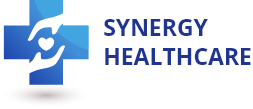Medical billing is a complex field in best of times and the field of anesthesia billing is very specific and nuanced. Correct anesthesia billing is very important not only for ensuring that the healthcare providers are compensated correctly but also for avoiding costly mistakes that can result in denied claims or losses. In this blog, we will discuss key tips for accurate reimbursements in anesthesia billing.
Understanding Anesthesia Billing

Anesthesia billing stands out from other medical billing processes because of its specialized components. Unlike other procedures where billing is based on a flat fee or a set number of units, anesthesia billing involves calculating charges based on time, complexity, and the level of care provided. The primary components in anesthesia billing include:
- Base Units (BUs): These units are “complexity units” for the anesthesia service. The different anesthesia CPT codes are assigned specific base unit values to reflect the complexity/intensity of the procedure.
- Time Units: Anesthesia time is always billed in 15-min increments, where each increment is considered a time unit. Proper billing requires precise documentation of anesthesia start and end times.
- Modifiers: Modifiers are essential in anesthesia billing as they provide additional information about the procedure, such as the physical status of the patient (e.g., P1 for a normal healthy patient) or the use of multiple anesthesia providers.
- Conversion Factor: Conversion Factor The dollar amount used to determine the reimbursement per anesthesia unit. It differs based on geographic location and what is mandated by Medicare and other payers.
Common Challenges in Anesthesia Billing
Before diving into the tips, it’s important to understand some common challenges that anesthesia billing professionals face:
- Comprehensive Documentation: The Art of Anesthesia Billing Is an Accurate and Complete Reporting Discordances between the medical record and the billing claim can lead to payment delays or denials.
- Time-Based Billing: Anesthesia billing, in essence, is mostly based on time, therefore mistakes in documenting start and end times for an anesthesia case can result in highly significant underpayments or overpayments.
- Modifier Usage: There are instances where the appropriate modifiers are used for procedures performed, but the modifiers selected may not be ideal for the given situation, particularly for a patient with complicated or multiple providers. The use of the wrong modifier can result in claim denials.
- Compliance with Regulations: Anesthesia billing is governed by both state and federal regulations, which are subject to frequent changes. Staying updated on these changes is crucial for avoiding compliance problems.
Tips for Accurate Anesthesia Billing
To ensure accurate reimbursements and minimize errors, anesthesia billing professionals should follow these best practices:
- Ensure Detailed Documentation
Detailed documentation is the foundation for accurate anesthesia billing. All relevant details should be included in the anesthesia record, including the patient’s medical history, the type of anesthesia administered, the start and end times, and any complications or additional procedures. Discrepancies among the surgical notes- post-operative notes- anesthesia record must be avoided.
Pro Tip: Auditing is one of the best methods to identify common documentation issues with anesthesia records!
- Accurately Calculate Anesthesia Time
Time is quintessential for anesthesia billing. Accurate documentation of the exact start and stop times for anesthesia services are critical. The start time is usually when the anesthesia provider starts to prepare the patient for anesthesia, and the end time is when the patient is safely handed off to post-anesthesia care.
Pro Tip: To minimize manual errors and ensure accurate calculation of time units, it is advisable to implement automated time tracking systems.
- Use Appropriate Modifiers
Modifiers provide relevant context to the anesthesia service provided. Physical status modifiers (P1-P6), for example, tell us about the health status of the patient, and QS and QX modifiers refer to monitored anesthesia care and CRNA services delivered under an anesthesiologist’s supervision, respectively. Using modifiers correctly is essential for correct billing and preventing claim denials.
Pro Tip: Develop a comprehensive guide or reference sheet for anesthesia modifiers to ensure they are applied consistently and correctly.
- Stay Informed About Regulatory Changes
Anesthesia billing rules are subject to change, particularly around Medicare and Medicaid. For this reason, it is important to be aware of these updates so that you can avoid compliance issues and billing practices that do not conform with current guidelines. This includes changes to conversion factors, billing codes, and documentation requirements.
Pro Tip: To amend due diligence for developments in anesthesia billing compliance, subscribe to industry newsletters, attend webinars, and participate in continuing education programs.
- Regularly Audit Claims
Routine auditing of anesthesia claims can disccover and fix mistakes before they result in claim denials or underpayments. Audits must ensure that time units are calculated accurately, modifiers are appropriately applied, and the documentation supports the services billed.
Pro Tip: Have an audit process for billing that both includes internal and external reviews for an objective review.
- Utilize Anesthesia Billing Software
Specialized anesthesia billing software can help streamline the billing process, reduce errors, and ensure compliance with regulations. These tools usually come with offerings like automated time tracking, modifier suggestions, and integration with electronic health records (EHRs) to make billing both accurate and efficient.
Pro Tip: Select customizable anesthesia billing software with strong support and training.
- Understand Payer-Specific Requirements
Different payer services have different physical requirements for anesthesia billing. For example, some payers will only bill a specific kind of anesthesia, or will require supporting documentation. Educating yourself about payer-specific requirements, ultimately, will help avoid denials and get paid, timely.
Pro Tip: Keep a payer-specific billing guide for each of the major insurance providers you do business with that specifies the unique requirements for each.
- Ensure Proper Coding for Anesthesia Services
Proper coding is used to bill anesthesia services properly. This covers appropriate coding of the anesthesia services rendered with the correct CPT codes, along with proper documentation and coding of related procedures performed. Errors in coding can result in huge financial loss or compliance goof-ups.
Pro Tip: Make sure that you review and update your coding practices regularly and that they are in accordance with the latest CPT codes and relevant guidelines for anesthesia services.
- Train Your Billing Staff
Consistent training and education for your billing personnel is also very important to ensure proper anesthesia billing. Keep your team updated on the latest billing codes, modifier usage, documentation requirements, and regulatory changes. Conducting regular training sessions will assist in galvanizing best practices and minimizing the behavior that leads to errors.
Pro Tip: Consider investing in certification programs for your billing staff to enhance their expertise in anesthesia billing and coding.
- Communicate with Anesthesia Providers
Collaborate with Anesthesia Providers Anesthesia billing requires cooperation between billing and anesthesia providers to ensure accurate and timely billing. Make sure the providers know how billing works and what they should dictate so they can bill correctly. Such collaborative pacts can help speed up or amend the process via platforms such as Synergy HCLS.
Pro Tip: Schedule regular meetings between billing staff and anesthesia providers to discuss any challenges, updates, or questions related to the billing process.
Conclusion
At the same time, correct anesthesia billing is crucial for allowing health care providers to provide adequate payment for their service. The role requires adherence to detailed documentation standards, accurate timekeeping practices, and modifier use, as well as staying up to date with evolving standards, to position the practice for fewer errors and greater revenue. Regular audits, specialized software such as Synergy HCLS, and continued training help ensure that anesthesia billing practices run smoothly. Following these tips can help healthcare practices manage the intricacies of anesthesia billing, ensuring accurate and timely payments.


